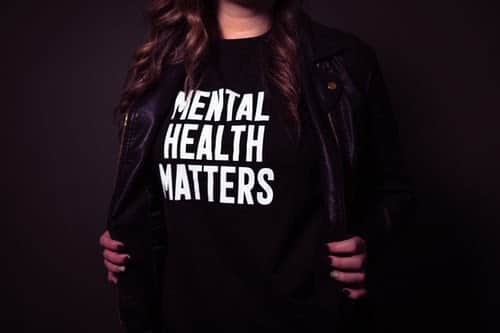Table of Contents
Group therapy is a type of psychotherapy in which one or more therapists work together with a group of individuals who are experiencing a common issue. It can be used alone or as a part of a more comprehensive treatment plan that includes individual therapy.
Group therapy is often used for mental health issues such as anxiety, substance abuse, depression, PTSD, phobias as well as eating disorders. Central to group therapy is mental health activities from which group members can learn.
What are mental health activities?

Mental health activities refer to things that you can do to improve mental health, whether individually or as a group.
These activities can include meditation, mindfulness activities, mood trackers, psychotherapy or cognitive behavioral therapy worksheets and even games and social skills activities.
Mental health techniques in group therapy
Although mental health issues can be a challenge, it is possible to overcome it with the right intervention. Group therapy offers many benefits to individuals who need support in this journey, including effective techniques that can help identify issues and restructure thinking.
Identifying cognitive distortions
Cognitive distortions refer to the irrational thoughts that influence emotions and behavior. Biased thinking will result in negative emotions and behaviors such as anxiety, depression, relationship issues and other mental health conditions.
Being aware of cognitive distortions will help in the process of shifting to more rational and objective thinking. Cognitive distortions that individuals with mental health issues may struggle with include:
- Overgeneralization
- All or nothing thinking
- Disqualifying the positive
- Negative metal filters
- Magnification (or minimization) of events
- Jumping to conclusions
- Labelling and/or mislabeling
- Emotional reasoning
- Should statements
- Personalization
Cognitive restructuring and reframing
This technique is used to actively reprogram the brain by changing belief systems. Reframing our thoughts will help in determining our emotions and ultimately, our behavior. Negative thoughts are challenged and replaced with more positive thinking.
Thought record
Keeping a thought record can be used to make clients more aware of how their thoughts, feelings and behaviours link and interact. A thought record is an excellent tool to challenge irrational thoughts with the aim of behavioral changes.
Worry tree
Many individuals who have mental health issues experience fears, worries and anxiety. The ‘Worry Tree’ lets you dive deeper into what is going on with the goal of gaining a new perspective by changing focus and considering other outcomes.
Chunking for problem-solving
Chunking is an excellent problem-solving method that involves the process of breaking down large amounts of information into smaller bits. This technique enables you to analyze a situation to find the underlying cause. By chunking information down into smaller pieces, you will be able to pinpoint why and how something happened.
Mental health group therapy activities
There are plenty of group session therapy activities that are designed to help people who are facing mental health conditions. Here are some that your therapist may ask you to do if you decide to participate in group therapy:
- Role-playing or psychodrama exercises to learn how to cope with certain situations as well as explore emotions and identify cognitive distortions.
- Listening and moving to music to reconnect the mind and body
- Affirmation phrases or posters that keep you positive when you are depressed, anxious, stressed or angry. For example ‘You have a future’ or ‘You’re worth it’.
- Respectful and enjoyable discussion on a variety of topics such as art, culture and history to help develop healthy conversational and communication skills
- Creating a schedule as a group to build relationships, work together, work through conflict and improve communication skills.
- Create a list of ‘stay-busy’ things that can be done when having negative thoughts and feelings. For example, going for a jog or painting when feeling anxious.
- Creating something as a group using materials such as blocks, or paper to encourage communication and building relationships.
- Everyone in the group shares a joyful memory. Group members learn to identify feelings and emotions on the memories that come up.
- Identify and build resilience by drawing or painting an image of nature surviving in harsh environments. The therapist may ask group members to talk about how they feel and how they relate to the picture.
- Managing anger by discussing violence. In this activity, participants complete sentences such as these in their journal:
- Violence happens because…
- Someone who is violent towards others is trying to…
- What I need is….
- I wish people would understand that I am….
- Find purpose and problem solve by listing one’s gifts, strengths, and talents as well as problems and issues in the world that are concerning to you. Use the listed gifts to solve the listed problems.
- Become more self-aware by listing out inner qualities that are hidden from the other people around you.
- List out things to be grateful for and practice gratitude
- Learn the joy of giving by listing or drawing out gifts that you would like to give to yourself, someone you love and a stranger. Share with the group why you choose the gift for each person.
- Create puppets with craft materials to represent real or imaginary characters that are wise. Group members can reenact a time in their life when they asked the puppet for advice.
- During group therapy, the therapist may also partner group members together according to their strengths, weaknesses and personality differences. The pair may be asked to solve a puzzle or challenge to learn how to rely on and trust each other.
- Look for the positive in difficult situations by discussing the phrase ‘without the dark, we’d never see the stars. Paint a night scene with start and use both images and words to describe the ‘gifts’ that have resulted due to hard times.
- Draw and describe your ‘perfect life’. List doable steps that will help you make your dream come true. Share your dream with your group members.
- Discuss and learn about holistic health, including having a healthy mind, heart and body. Share ideas and discuss how to improve self-care by eating healthy, exercising and getting enough sleep.
- Activities that identify and discuss feelings that have been bottled up.
Conclusion

Group therapy can be a great help for those who are facing mental health issues. It offers support from understanding from peers without judgment and a safe space for individuals to deal with their conditions.
There are several types of group therapies available, each designed to address the specific needs of the group. For example, substance abuse group therapy will address things such as overcoming addiction.
Seek help from a mental health professional as soon as possible if you or your loved one is struggling with mental health conditions.
The article is a part of our comprehensive series on “What is group therapy and what to expect?”
No matter what you’re facing, perhaps our website can offer up some solace or comfort. Know that you’re not alone, and that there is help available. This can be hard to keep in mind if you haven’t quite found the right support system. While it’s definitely not easy to find the right fit—whether you’re looking for a support group or a mental health provider—with diligence, it’s totally possible.
If you are a therapist, life coach or counsellor looking to join our growing community, head over to book a tour once you have learnt about the plans we offer. At A Space Between, there is a ready league of providers you can network with. With professionals from various backgrounds and therapy practices, there are bound to be the ones you can connect with. Private practice does not have to be lonely.


